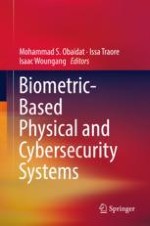2019 | OriginalPaper | Buchkapitel
7. Behavioral Biometrics Based on Human-Computer Interaction Devices
verfasst von : Chi Lin, Mohammad S. Obaidat
Erschienen in: Biometric-Based Physical and Cybersecurity Systems
Aktivieren Sie unsere intelligente Suche, um passende Fachinhalte oder Patente zu finden.
Wählen Sie Textabschnitte aus um mit Künstlicher Intelligenz passenden Patente zu finden. powered by
Markieren Sie Textabschnitte, um KI-gestützt weitere passende Inhalte zu finden. powered by
